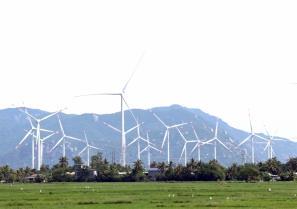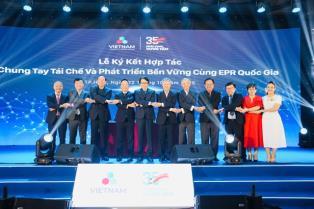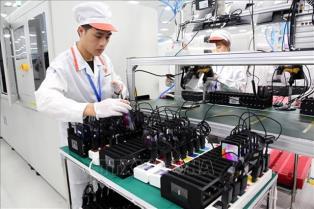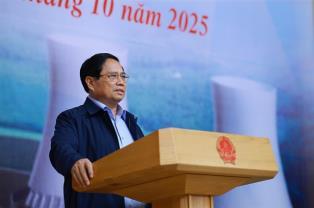With a projected capacity of 32.7 million TEUs a year, the city could soon rival Singapore and other major regional ports.
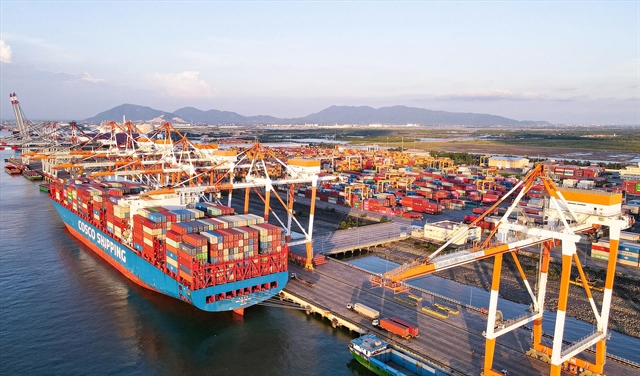
HÀ NỘI — The new metropolis formed from the merger of HCM City, Bình Dương, and Bà Rịa–Vũng Tàu is projected to generate a Gross Regional Domestic Product (GRDP) of VNĐ2.97 quadrillion (US$114 billion) in 2025, eyeing to become a regional powerhouse with global influence.
Yet, structural bottlenecks threaten its ability to lure foreign investors, multinational corporations, and major financial groups.
A regional powerhouse takes shape
The merger unites three complementary economic engines, described by experts as the “three legs of a tripod” forming a dynamic, self-sustaining urban ecosystem.
HCM City anchors the region as a financial and commercial hub, hosting major banks, securities firms, insurance companies and professional services. Bình Dương brings advanced manufacturing and a knack for attracting foreign investment, Bà Rịa–Vũng Tàu adds deep-sea port infrastructure, a diverse energy portfolio spanning oil, gas, and renewables and coastal tourism potential.
Trần Thị Mỹ Xuân from Thủ Dầu Một University said the merger creates a strategic “urban–service–innovation triangle” for southern Việt Nam.
However, experts warned that fragmented urban planning post-merger has led to overlapping functions and disjointed spatial development, weakening regional connectivity, logistics efficiency and synergy among ports, industrial zones and transport networks.
Logistics costs, which consume 16-17 per cent of Việt Nam’s GDP, far exceed those in Japan (11 per cent), Singapore (8 per cent), Malaysia (13 per cent), or Indonesia (13 per cent). Limited multimodal transport links spanning sea, road, rail and air, coupled with low digitalisation in supply chains, fuel inefficiencies. Persistent congestion and overburdened infrastructure further erode competitiveness.
A shortage of skilled workers in fields like big data, AI, international finance and logistics 4.0 also hampers growth and deters investors.
Three breakthroughs for transformation
The ongoing digital transformation and fourth industrial revolution offer unprecedented opportunities to HCM City to develop advanced digital services, fintech, e-commerce and other high-tech sectors such as AI, blockchain and the Internet of Things (IoT).
With a combined seaport capacity expected to reach 32.7 million TEUs annually once projects are completed, the city could rival Singapore’s 37 million TEU capacity and other major regional ports, cementing its indispensable role in global value chains, especially in IT outsourcing, cross-border financial services, logistics and supply chain management.
Cao Minh Nghĩa from the Ho Chi Minh City Institute for Development Studies, stressed that achieving Southeast Asian mega-city status and a spot among the world’s top 100 most livable cities hinges on breakthroughs in finance, banking, insurance, e-commerce, luxury tourism, logistics, health care and education. The rise of digital, green and circular economies offers a chance to restructure toward sustainable growth.
Experts recommended focusing on three core breakthrough: institutional and policy reform, enhanced infrastructure connectivity, and a diversified service ecosystem.
Major projects already in motion are set to generate huge growth momentum. The Tân Sơn Nhất International Airport's new Terminal T3 and the Long Thành International Airport in neighbouring Đồng Nai province will boost aviation, logistics, and tourism.
Ring Roads 3 and 4 will cut cargo transport times and enhance regional competitiveness. The Cái Mép-Thị Vải port complex, ranked among the world’s top 20 container ports, will solidify the city’s ambition to become a regional logistics and distribution hub, defining its path to global mega-city status. — VNA/VNS


